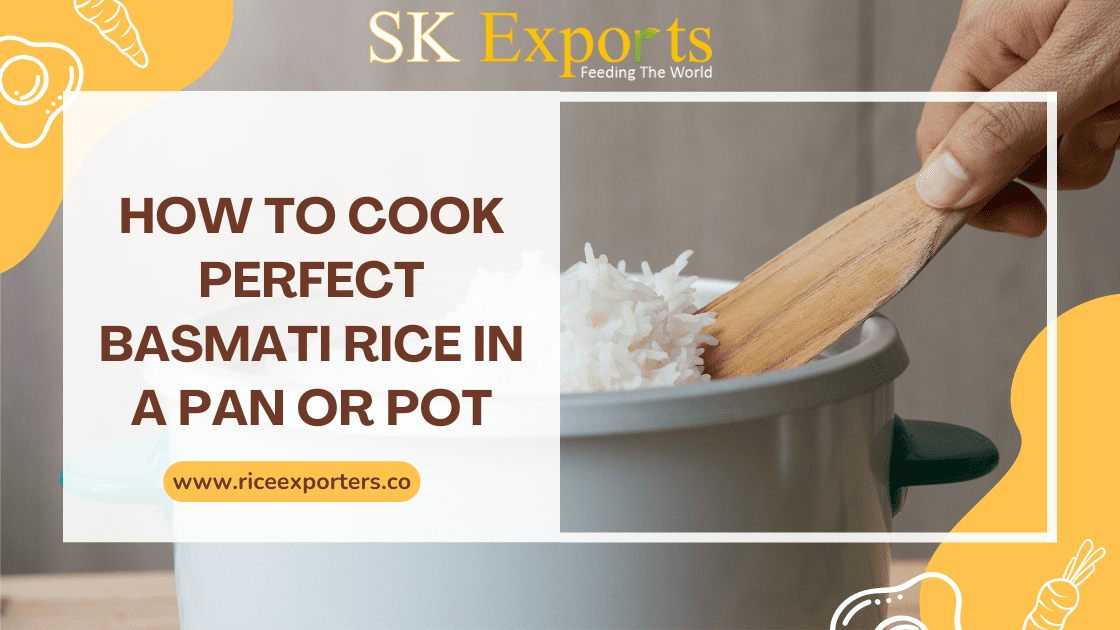In India and in the Indian Diaspora, basmati rice is considered a symbol of sophistication. It’s an indication that you’re hosting someone important and you want to impress them. But why is this? What makes Basmati so special? And how do we cook it at home? We’ll explain below!
A Brief History of Basmati Rice
The history of basmati rice begins in the foothills of the Himalayas, where the first farmers began cultivating rice more than 8,000 years ago. For thousands of years, these farmers in what is now southern Nepal and northern India created a symbiotic relationship with the indigenous aquatic flora and fauna. Advancements in irrigation systems, growing techniques, and the discovery of new strains of rice created a landscape in which the perfect conditions for growing rice could thrive. Today, basmati is grown in the foothills of the Himalayas, the Ganges and Brahmaputra Rivers in the plains of northern India and the plains of southern Nepal and Pakistan. This allows for a diversity of nuanced flavours because of the varied microclimates. As a result, basmati rice is known as the “Queen of Rice.”
How to cook basmati rice
Basmati rice is naturally fragrant and aromatic, making it ideal for aromatic dishes such as paella and pilaf. Once you get the hang of cooking it, this rice is great for almost any type of meal. First, wash the rice well and let it sit for 30 minutes before you put it in the pot. The rice will absorb more water this way than if you just pour the water over it. — Then, put the rice in a pot with 3 cups of water. — Cover the pot, turn the heat on to low, and let the rice boil for 18 minutes. Make sure you stir the rice every few minutes to prevent it from sticking to the pot. — Once the rice is cooked, turn off the heat and let it sit, covered, for 5 minutes. This will prevent the rice from overcooking and will keep the grains separate. — Now, take the pot off the burner and put the pot in the refrigerator. This will keep the rice fresh until you’re ready to use it. — Alternatively, you can also transfer the rice to a container, cover it with plastic wrap, and then put it in the freezer. When you’re ready to use it again, just thaw it in the refrigerator for 24 hours.
The difference between fragrant and non-fragrant rice
If you’ve ever wondered why basmati rice is so special, this next section is for you. The difference between fragrant and non-fragrant rice comes down to just one thing: how long the rice is kept before cooking. -Non-fragrant rice is rice that has not been steamed for 12 hours or more before it’s cooked. Fragrant rice is any rice that has been steamed for 12 hours or less before it’s cooked. Because basmati rice has a naturally long shelf life and is fairly easy to store, it’s a great choice for making ahead of time. You can easily keep a few bags of this rice in your pantry and use them whenever you want to serve paella or make some Indian food.
Why is Basmati so special?
First, when you grow basmati rice, you’re growing aromatic rice. This means that the rice has been cultivated in the right conditions so that it is naturally fragrant. – Second, the way you grow the rice will affect how aromatic the rice is. This is because the strain of rice that you plant in a particular field will become part of the rice’s genetic makeup. Third, the length of time the rice is steamed affects the taste of the rice. — Fourth, the type of pot that you use while cooking the rice also makes a difference. — Last, the way you serve the rice makes a difference. Serving rice that is served raw, lightly salted, and with a simple dish is best.
Some useful tips before cooking basmati rice
To get the most flavour out of your basmati rice, soak it in water for 30 minutes before you cook it. — Another tip is to only use cold water to rinse the rice, and then pour hot water over the rice to rinse it again. — To maintain the aromatic quality of the rice, rinse it with cold water after soaking it for 30 minutes and before you cook it. — To prevent the rice from overcooking and to maintain the aromatic flavour, bring a pot of water to a boil before you add the rice. — To prevent the rice from sticking to the pot, add a tablespoon of ghee or butter to the pot. — The best pots for cooking rice are heavy-bottomed pots, such as a dal pot or a clay pot.
4 Ways to Serve Perfect Basmati Rice with Dinner
Of all the ways you can serve rice, paella is the most authentic option. A classic Spanish dish of seafood, vegetables, and rice, paella is a great way to bring together a variety of flavours. — Make a big batch of paella and then have it for dinner over the next few nights. — The next best option is to use rice as a side dish. Choose a variety of dishes from different regions of the world and mix them together. — For example, if you’re having a North Indian meal, serve Indian dishes like naan, korma, and palak. — For a South Indian meal, serve dal, sambhar, and rasam. — Last, make a quick pilaf using basmati rice and a few other ingredients. A quick-fried rice pilaf is a great option for a quick, easy, and healthy meal.
